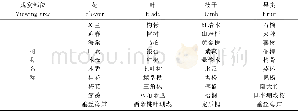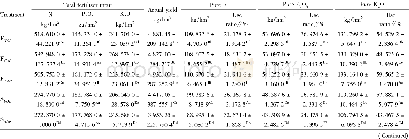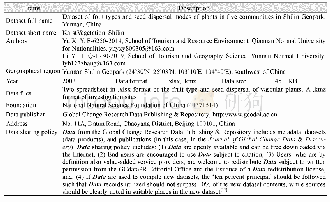《Table 4–Se use efficiency in seeds and plants of common buckwheat during the growing period in 2015
 提示:宽带有限、当前游客访问压缩模式
提示:宽带有限、当前游客访问压缩模式
本系列图表出处文件名:随高清版一同展现
《Performance of common buckwheat(Fagopyrum esculentum M.) supplied with selenite or selenate for selenium biofortification in northeastern China》
CK,without Se application;Se(IV),selenite;Se(VI),selenate;1/2 Se(IV+VI),combination of selenite and selenate.Different letters indicate significant differences(P<0.05)between the treatments.
With respect to Se translocation in common buckwheat,a marked increase in TF during the growth period was observed in plants treated with selenate,followed by treatment with the combination of selenite and selenate,whereas plants supplemented with only selenite showed an inverse trend in TF values over the growing season.Plants absorb and translocate selenate via sulfur transporters,and selenate is further metabolized in leaves[34];these factors may account for the high TF values of plants with selenate supplementation.There could also be a difference in translocation efficiency between selenate and selenite owing to the type of transporters involved[15].Li et al.[35]also reported selenate was translocated to shoots immediately after absorption but that selenite tended to be converted into other organic forms of Se and be stored in the root,explaining the low TF values of selenite-treated plants observed in our study.However,TF values in Se(VI)-treated plants were more than twice those of plants treated with 1/2 Se(IV+VI),suggesting that selenite supplementation might inhibit the translocation of total Se from root to shoot when selenite and selenate interact.Also,a reduction in Se use efficiency was observed in both study years when the plants matured(i.e.,DAS75)(Table 4) .These results were comparable with those of a previous study[27],suggesting that most Se applied was retained in the soil environment or volatilized to the atmosphere.The decrease in Se use efficiency may also have been due to an initially high Se uptake rate,which depleted Se in the soil,limiting its availability during the growth period.
| 图表编号 | XD0012328100 严禁用于非法目的 |
|---|---|
| 绘制时间 | 2018.08.01 |
| 作者 | Ying Jiang、Xiaomin Feng、Yadong Yang、Xiangxue Qi、Yongfeng Ren、Youhui Gao、Weidong Liu、Yuegao Hu、Zhaohai Zeng |
| 绘制单位 | College of Agronomy and Biotechnology, China Agricultural University、Institute of Crop Sciences, Chinese Academy of Agricultural Sciences、Key Laboratory of Crop Physiology and Ecology, Ministry of Agriculture、College of Agronomy and Biotechnology, China A |
| 更多格式 | 高清、无水印(增值服务) |
查看“Table 4–Se use efficiency in seeds and plants of common buckwheat during the growing period in 2015 and 2016.”的人还看了
-

- 表3 凤阳县城区居住小区不同观赏特性常用植物Table 3 The table of common ornamental plants in the residential area of Fengyang county
-

- Table 6 Use efficiency of fertilizers to the actual yield of rice in the early and late rice cropping fields and LAD
-

- Table 6 Use efficiency of fertilizers to the actual yield of rice in the early and late rice cropping fields and LAD





